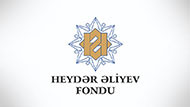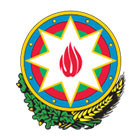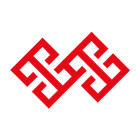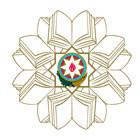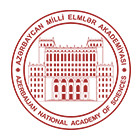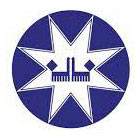Gobustan Rock Art Cultural Landscape
In 2007 Gobustan was included in the UNESO World Heritage List .
Gobustan state historical and artistic reserve is located in the south of the Absheron peninsula. The monuments of this reserve all date from different centuries, covering a substantial amount of time: from the Mesolithic era up to the Middle ages.
The history of the human civilization dates back to the ancient times, hence determining the first footprints of the development of the human race, or pinpointing the precise history of mankind is an incredibly difficult mission. In that sense, Gobustan’s numerous rock inscriptions form a unique stone legacy displaying the lifestyle, occupations, religious beliefs and the first official documents of the human race, allowing scientists to form a clearer vision about one of the first human societies. In fact, the stone inscriptions present in Gobustan can be rightfully considered as one of the first documented signs of the human culture.
Morever, in 1938, due to several discoveries of the remains of the ancient plants, animals and birds, the Azerbaijani scientists were able to provide information regarding the paleontological question of the flora and fauna present some 130 or 170 thousand years ago.
The Gobustan rocks protected the area from the severe winds, offering animals a comfortable shelter. This naturally created comfortable living space also attracted the local hunters. Humans have lived in Gobustan for centuries. In an area of 3,096 hectares that forms the natural reserve, archaeologists discovered more than six thousand rock drawings, settlements, burial mounds, formerly inhabited caves, megalithic structures, traces of settlements and tombs. Humans, who settled in Gobustan more than twenty thousand years ago, lived in a communal clan system, which was based on kinship ties on the maternal side, tribal ownership of the means of production and collective production and consumption. The leading role in the life of the tribe was played by women - homemakers, caregivers of children and the main suppliers of food, since only gathering guaranteed daily food at the time.
In addition, the large number of children a healthy woman could give meant not only growing concerns, but also new workers the tribe badly needed.
The period of matriarchy depicted on the rock paintings of Gobustan lasted several millennia.
But gradually, under the influence of new tools, especially the bow and the arrow, and such activities as cattle breeding and agriculture, the role of the primary breadwinner was taken over by the man, who now led the family and the clan more often. The epoch of the Mesolithic, which was relatively short in the present territory of Azerbaijan, but very revolutionary for the changes occurring in life, was getting under way. American archaeologist Robert Braidwood called it an “era of initial cultivation” when man not only found food by hunting, fishing and gathering, but also produced it and even learned how to create its reserves, as evidenced by single-type holes carved into rocks.
Following the emergence of occupations that guaranteed food for humans, and therefore, largely lifted the problem of survival, they finally had free time. Norms and rules of conduct formed and prohibitions and requirements were established, which gradually became part of the tradition and first primitive religions. At the same time, knowledge about the surrounding world was accumulated and handed down from generation to generation. Historians attribute the emergence of such skills as the treatment of wounds and injuries and even the first surgeries, evidence of which was found in Gobustan, to this period. Arts appeared precisely in the Mesolithic. Its forms were not so diverse yet, but there was already music and dancing, most of which had a ritual character. Several large stones – gavaldashes, which served as drums, were found in Gobustan. Their sounds could be heard for several kilometers. But the most significant changes can be seen in cave paintings, and it is noted by all researchers of Gobustan petroglyphs.
Images become multifigured with people and tribesmen in their heart. Artists focus on group hunting scenes, fights, fishing and dancing. They want to convey not only the event, but also the main feeling of the time: the situation has changed and man is no longer a stepson of nature and an easy prey of wild animals. He already claims to become master of the world. The Gobustan rock paintings belong to different epochs and cover a very long period from the 10th millennium BC to the Middle Ages. Because of this particularity alone, the Gobustan stone book is considered unique in the collection of other rock paintings that exist in the world. Most often, ancient artists portrayed men: hunters, fishermen or rowers. In the later cave paintings, riders can be found too. At the same time, some researchers note similarities between these Gobustan images and petroglyphs found in East Africa. Women were depicted less often. They are not depicted in the labor process, although the fairer sex had numerous duties too. For the artist, the most important thing was that women were continuers of the family, and therefore, they were depicted with exaggerated large breasts, powerful thighs and calves.
An image of eight armed women found on the rocks of Boyukdash is quite atypical for Gobustan. Five of them stand in a row covering the silhouette of a primitive aurochs. Women are shown behind and the contours of the figure are very rough. Each of the women has a loose so-called complex (composite) bow slung over their shoulder. According to experts, the bow appeared only at the time of the Scythians - no earlier than the 5th-4th centuries BC. There are many hypotheses regarding human settlements in Gobustan. The author of one of them was the well-known Norwegian traveler and scientist Thor Heyerdahl. On seeing the famous image of a multi-seat boat of the 6th millennium BC among the rock carvings of Gobustan, he became firmly convinced that, most likely, it was a reed vessel related to Sumerian ones. Therefore, people who lived in Gobustan could have contacts with the world’s oldest civilizations. Heyerdahl said: “What ancient and, of course, advanced civilization was here still remains a mystery. But Azerbaijani scientists will be able to solve it.” In 2011, a large modern museum was opened in Gobustan. An area of 2,460 square meters includes exhibitions about World Heritage sites, the history of the discovery of petroglyphs, ancient people living in the territory of Gobustan and its original flora and fauna. More than 100,000 items found by archaeologists during excavations are stored in repositories. These are tools and weapons, jewelry, charms, animal bones, plant seeds, etc. In 2013, the Gobustan Museum became one of the winners of the European Museum of the Year Award (EMYA). Today, thanks to the rock paintings, archaeological finds and paleontologists discovered in Gobustan, we have a glimpse of the lives of our distant ancestors and a chance to try to imagine their way of life and the world around them.
The Gobustan stone book has not been read to the end yet. Many of its pages have not been found yet. Others require deciphering and interpretation. And one can only imagine how many more secrets and mysteries this chronicle of millennia contains.




